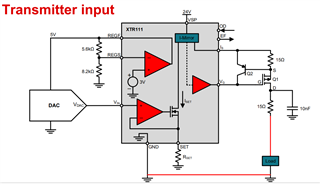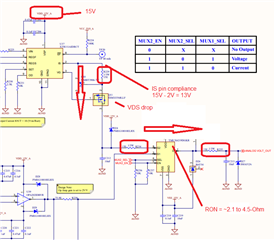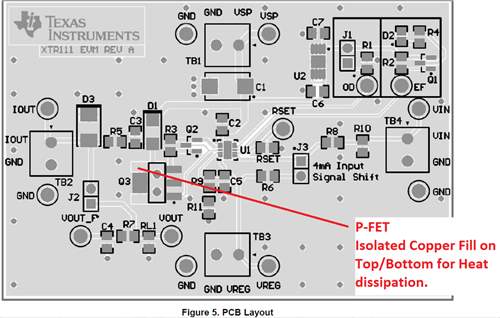Hello Team,
This thread is a continuation of my previous post Link.
We are using XTR111 in one of our projects.
Attached is the schematic for the same.
We need both analog voltage (0 to 10V) and analog current (4 to 20mA) outputs.
So we are using a mux to switch between voltage and current.
A DAC is used to provide voltage at the VIN pin of the XTR111.
The resistor Reset is 2.5K
So the voltage input at the VIN pin corresponding to 20mA is 5V.
But we are getting only 18V when 5V is applied at the VIN pin also, the current seems to be carrying with the load.
When we connected a 500E resistor, the current was 18mA and it suddenly dropped to 16mA when the load resistance is increased to 1K resistor.
What could be the reason for this?
Analog Output1.pdf




